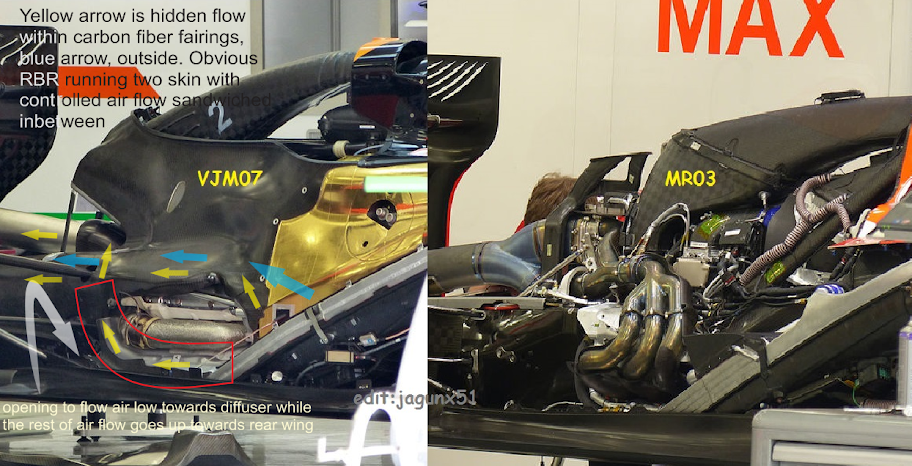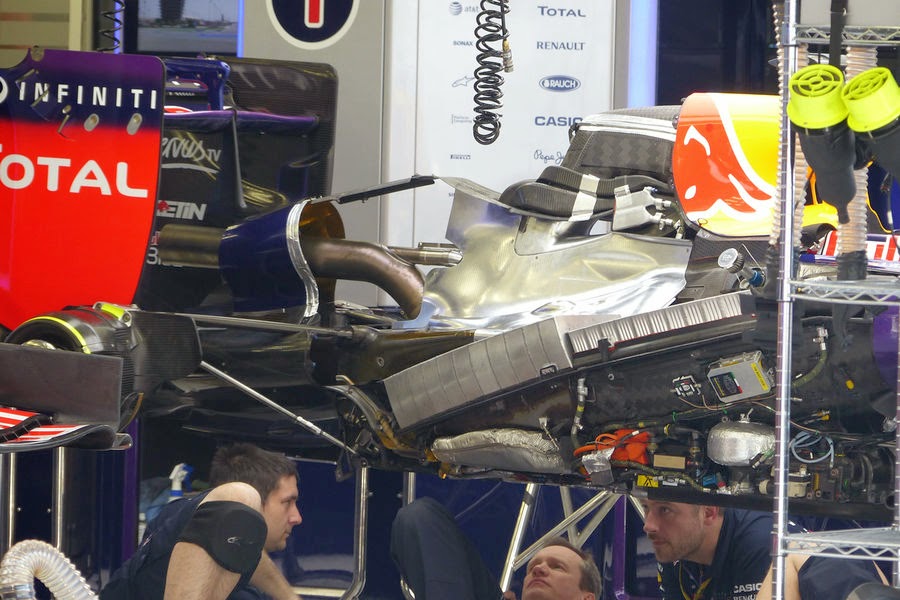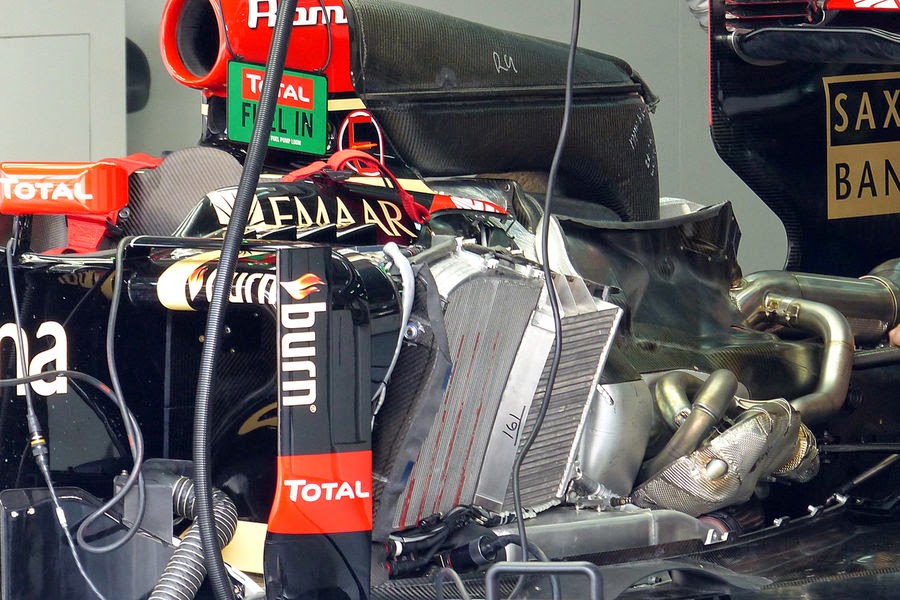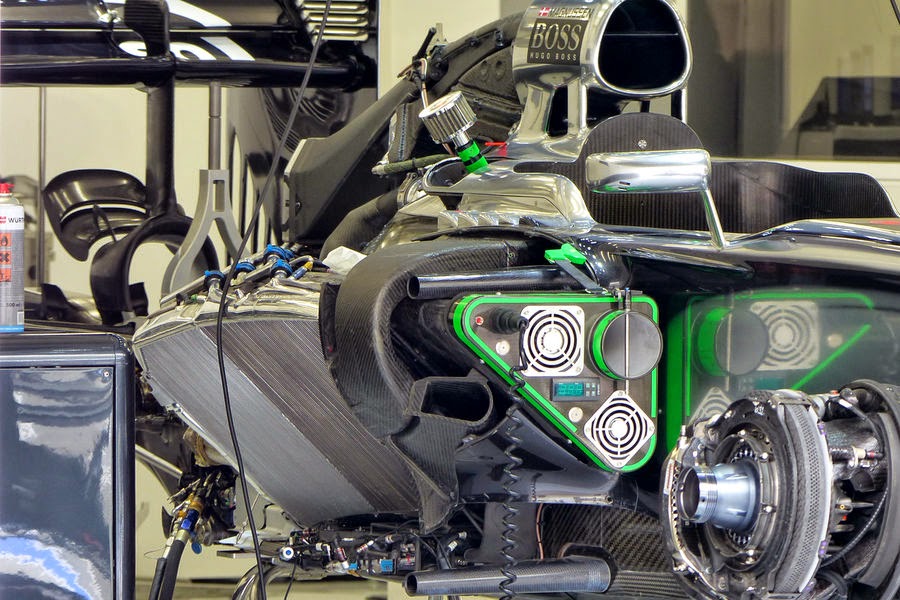There is a debate going around about those log exhaust extractors. I think this picture makes it quite clear of Red Bulls choice. Edited this picture to take a look at what Newey had done to the engine bay which has turned into an area full of air chambers redirecting air to the desired exit for maximum benefits. Compare it to the picture on the right with a more tradition engine bay.

Edited by Powersteer, 30 May 2014 - 12:13.


















